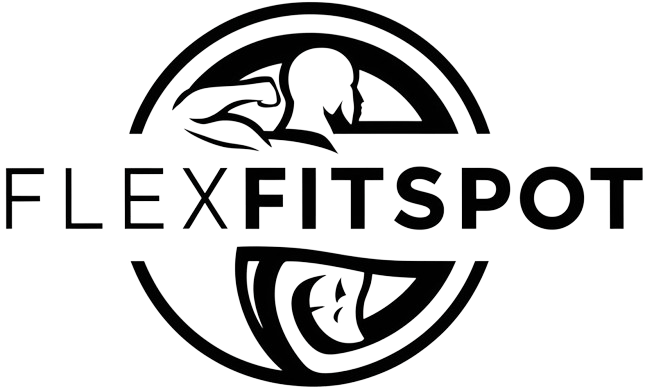Introduction to Calisthenics Back Exercises
Calisthenics, a form of exercise that primarily uses one’s own body weight for resistance, has gained significant popularity for its effectiveness in building strength and muscle mass. Unlike traditional weightlifting, calisthenics exercises leverage natural movements to enhance functional strength and flexibility. Specifically, for back muscle growth, calisthenics provides a robust and versatile approach.
The back comprises several muscle groups, including the latissimus dorsi, trapezius, and rhomboids. These muscles play a crucial role in maintaining good posture, supporting the spine, and facilitating a range of upper body movements. By incorporating calisthenics into your workout routine, you can effectively target and strengthen these muscles, resulting in improved overall fitness and reduced risk of injury.
One of the key benefits of using bodyweight exercises for back muscle growth is the emphasis on compound movements. These exercises engage multiple muscle groups simultaneously, leading to better muscle coordination and more efficient workouts. For instance, exercises like pull-ups and push-ups not only target the back but also involve the core, shoulders, and arms, promoting balanced muscle development.
Another advantage of calisthenics is its accessibility and scalability. Whether you’re a beginner or an advanced athlete, you can adjust the intensity of your workouts by modifying the exercise variations or the number of repetitions. This adaptability makes calisthenics suitable for individuals of all fitness levels and allows for continuous progression and muscle growth.
Moreover, a strong back is essential for maintaining proper posture, reducing the risk of back pain, and enhancing overall physical performance. A well-developed back not only contributes to a more aesthetic physique but also supports daily activities and athletic endeavors. Therefore, incorporating calisthenics back exercises into your fitness regimen can lead to significant improvements in both appearance and functionality.
Pull-Ups
Pull-ups are a fundamental calisthenics exercise that primarily targets the latissimus dorsi, traps, and other muscles in the back. Proper form and technique are crucial for maximizing muscle engagement and minimizing the risk of injury. To perform a standard pull-up, begin by gripping the pull-up bar with your palms facing away from you, hands slightly wider than shoulder-width apart. Hang from the bar with your arms fully extended and your feet off the ground. Engage your core, retract your shoulder blades, and pull your body upward until your chin clears the bar. Lower yourself back to the starting position in a controlled manner.
Pull-ups are highly effective for building back strength and muscle growth, but they also engage the biceps and forearms, making them a comprehensive upper-body workout. Variations such as wide-grip and close-grip pull-ups can target different parts of the back. Wide-grip pull-ups emphasize the outer portion of the latissimus dorsi, creating a broader back appearance. Conversely, close-grip pull-ups shift the focus to the inner back muscles and the biceps, providing a different stimulus for muscle growth.
For beginners, building up to a full pull-up can be challenging, but there are several strategies to help you progress. Start with assisted pull-ups using resistance bands or an assisted pull-up machine to reduce the amount of body weight you need to lift. Negative pull-ups, where you focus on the lowering phase, can also build strength. Jumping pull-ups or isometric holds at the top position are additional techniques to develop the necessary muscle engagement. Consistently practicing these variations will gradually increase your strength and ability to perform full pull-ups.
Chin-Ups
Chin-ups and pull-ups are often confused due to their similar movements; however, they target different muscle groups primarily because of the grip used. While pull-ups require an overhand (pronated) grip, chin-ups are performed with an underhand (supinated) grip. This key difference means chin-ups engage the biceps more intensively alongside the back muscles, such as the latissimus dorsi, teres major, and rhomboids.
Executing a chin-up begins with grasping the bar with your palms facing you, about shoulder-width apart. Engage your core and retract your shoulder blades. Pull yourself up until your chin is above the bar, then lower yourself back to the starting position with control. Proper form is crucial to maximize muscle growth and prevent injury. Avoid swinging or using momentum, as these can reduce the effectiveness of the exercise and increase the risk of strain.
Common mistakes in chin-ups include incomplete range of motion, where individuals fail to lower themselves fully or bring their chin above the bar. Another frequent error is flaring the elbows out too much, which can place undue stress on the shoulders. It is also important to keep the body in a straight line, avoiding excessive arching of the back.
For those looking to take their chin-up routine to the next level, variations such as weighted chin-ups can be an excellent addition. By adding extra weight, you can increase the intensity of the exercise, further promoting muscle growth. This can be achieved using a dip belt, weighted vest, or simply holding a dumbbell between your feet.
Incorporating chin-ups into your calisthenics routine can provide significant benefits for both your back and biceps, making it a highly effective exercise for muscle development. By maintaining proper form and progressively challenging yourself, you can maximize the gains from this foundational movement.
Inverted Rows
The inverted row is a highly effective calisthenics exercise that primarily targets the middle and upper back muscles. This exercise can be performed using a bar or rings, making it versatile and accessible for individuals at various fitness levels. To execute an inverted row, position yourself under a bar or rings, grab them with an overhand grip, and keep your body straight. Your feet should be planted firmly on the ground, and your body should form a straight line from head to heels. Pull your chest up towards the bar or rings, engaging your back muscles as you do so. Lower yourself back to the starting position in a controlled manner.
One of the significant advantages of inverted rows is their adaptability. By adjusting the angle of your body, you can modify the difficulty of the exercise. For beginners, positioning the bar or rings higher will reduce the angle and make the movement easier. As you progress, lowering the bar or rings will increase the angle, adding more resistance and making the exercise more challenging. This flexibility allows you to continually challenge your muscles and promote growth.
Inverted rows are particularly beneficial for improving posture. Strengthening the middle and upper back muscles helps counteract the forward rounding of the shoulders, which is common due to prolonged sitting and poor posture habits. Additionally, this exercise supports other back exercises by building a solid foundation of strength and stability. A strong, well-developed back is essential for performing more advanced movements, such as pull-ups and muscle-ups, with proper form and reduced risk of injury.
Incorporating inverted rows into your calisthenics routine can lead to significant improvements in muscle growth, posture, and overall back strength. Whether you are a beginner or an experienced athlete, this exercise offers a scalable and effective way to enhance your back muscles and support your fitness goals.
Australian Pull-Ups
Australian pull-ups, also referred to as body rows, are an excellent calisthenics exercise targeting the lower back and enhancing scapular stability. This exercise can be performed using a low bar or TRX straps, making it versatile for various fitness levels and settings. The primary advantage of Australian pull-ups lies in their ability to build foundational strength in the back muscles, which is essential for more advanced calisthenics movements.
To set up for Australian pull-ups, position a low bar or TRX straps at approximately waist height. Grasp the bar or handles with an overhand grip, ensuring your arms are fully extended. Walk your feet forward until your body is at an angle to the ground, maintaining a straight line from head to heels. Engage your core to prevent sagging or arching in the lower back, which is crucial for maintaining proper form and preventing injury.
Begin the exercise by retracting your shoulder blades and pulling your chest towards the bar or handles. Focus on squeezing your back muscles and keeping your elbows close to your body. Pause at the top of the movement, ensuring full contraction of the back muscles, before slowly lowering yourself back to the starting position. Controlled movements are key to maximizing muscle engagement and growth.
To increase the difficulty of Australian pull-ups, consider the following progression tips. Firstly, adjust the angle of your body by walking your feet farther forward, creating a steeper incline. This increases the resistance and challenges your back muscles more intensely. Secondly, you can elevate your feet by placing them on a raised surface, such as a bench or step. This variation shifts more of your body weight into the exercise, further enhancing the challenge. Lastly, implementing tempo changes, such as slowing down the lowering phase, can significantly boost muscle activation and endurance.
Incorporating Australian pull-ups into your calisthenics routine will not only strengthen your lower back but also improve overall scapular stability, laying a solid foundation for more advanced exercises.
Back Lever
The back lever is a highly advanced calisthenics exercise that significantly targets the entire back and core muscles. This move, often seen in gymnastics, requires a tremendous amount of strength, flexibility, and control. Before attempting the back lever, it is crucial to ensure that you have a solid foundation of shoulder and core strength to minimize the risk of injury.
Before embarking on the journey toward mastering the back lever, it is recommended to be proficient in basic calisthenics exercises such as pull-ups, dips, and planks. These exercises help in building the necessary strength and stability in your shoulders, back, and core. Additionally, incorporating specific shoulder mobility exercises and core workouts can aid in preparing your body for the demands of the back lever.
Here is a step-by-step guide to progressing towards the back lever:
1. Tuck Back Lever: Begin by hanging from a bar or rings with your elbows straight. Tuck your knees towards your chest and slowly lower your body until your back is parallel to the ground. Hold this position for as long as possible, gradually increasing the duration over time.
2. Advanced Tuck Back Lever: From the tuck position, start extending your hips while keeping your knees bent. This intermediate step helps in transitioning from the tuck back lever to the full back lever.
3. One-Leg Back Lever: Once comfortable with the advanced tuck, extend one leg out while keeping the other leg tucked. This variation increases the difficulty and helps in building the strength required for the full back lever.
4. Straddle Back Lever: From the one-leg position, gradually extend both legs out to the sides, forming a straddle position. This step aids in further enhancing your balance and control.
5. Full Back Lever: With consistent practice and gradual progression, you will be able to extend both legs fully, holding your body in a horizontal position. Ensure that your body remains straight and parallel to the ground, and avoid arching your back.
Safety is paramount when attempting the back lever. It is essential to progress gradually and listen to your body, avoiding any sudden movements or overexertion. Incorporate adequate warm-ups and cool-downs into your routine to maintain flexibility and prevent injuries. Remember, patience and consistency are key to mastering this challenging calisthenics exercise.
Superman Exercise
The Superman exercise is a highly effective calisthenics movement designed to strengthen the lower back, glutes, and hamstrings. By mimicking the iconic flying pose of the superhero, this exercise helps fortify the posterior chain, which plays a crucial role in maintaining a healthy spine and preventing lower back pain. The Superman exercise is simple yet powerful, making it an excellent addition to any calisthenics routine.
To perform the Superman exercise with proper form, follow these steps:
1. Lie face down on a mat with your arms extended straight in front of you and your legs fully extended behind you. Your body should be in a straight line from your fingertips to your toes.
2. Engage your core muscles and simultaneously lift your arms, chest, and legs off the ground. Aim to raise them to a height where you can feel a contraction in your lower back and glutes. Your head should remain in a neutral position, aligned with your spine.
3. Hold the lifted position for a few seconds, focusing on squeezing your glutes and lower back muscles. Breathe steadily throughout the hold.
4. Slowly lower your arms, chest, and legs back to the starting position. Repeat the exercise for the desired number of repetitions.
For added variation and to target different muscle groups, consider incorporating alternating arm and leg lifts:
1. Start in the same initial position as the standard Superman exercise.
2. Lift your right arm and left leg simultaneously while keeping your head and neck aligned with your spine. Hold the position for a few seconds, then lower them back to the mat.
3. Switch sides by lifting your left arm and right leg simultaneously. Hold the position for a few seconds, then lower them back to the mat.
4. Alternate between sides for the desired number of repetitions.
Regularly practicing the Superman exercise can significantly enhance lower back strength, improve glute and hamstring function, and support overall spinal health. This exercise is particularly beneficial for those who experience lower back pain, as it helps to stabilize the spine and reduce discomfort. By incorporating the Superman exercise into your calisthenics routine, you can build a stronger, more resilient posterior chain, contributing to better posture and reduced injury risk.
Plank Rows
Plank rows are an effective compound exercise that targets the back, core, and arms, making them an excellent addition to any calisthenics routine. This exercise not only helps in muscle growth but also improves stability and overall body strength. Plank rows can be performed using dumbbells or resistance bands, allowing for versatility depending on the available equipment and individual preferences.
To perform plank rows, begin by assuming a plank position with your hands directly under your shoulders and your body forming a straight line from head to heels. Engage your core to maintain a stable plank position throughout the exercise. If using dumbbells, hold a dumbbell in each hand, resting them on the ground. If using resistance bands, loop the band around a sturdy anchor and hold one end in each hand.
From the plank position, lift one hand off the ground or anchor, bringing the dumbbell or band towards your ribcage while keeping your elbow close to your body. Squeeze your shoulder blade as you row, then slowly lower the weight or band back to the starting position. Repeat the movement on the other side. Aim for 10-12 repetitions per side, ensuring that you maintain proper form and control throughout the exercise.
Maintaining a stable plank position is crucial while performing plank rows. Avoid letting your hips sag or rotate, as this can compromise your form and reduce the effectiveness of the exercise. Keeping your core engaged helps in stabilizing your body and preventing any unwanted movement.
Incorporating plank rows into your calisthenics routine can significantly enhance muscle growth and strength in your back, core, and arms. Consider adding them to your workout at least twice a week, either as part of a circuit or as a standalone exercise. Combining plank rows with other calisthenics exercises such as pull-ups, push-ups, and dips can create a comprehensive routine that targets multiple muscle groups, promoting balanced muscle development and overall fitness.
Conclusion and Workout Plan
Summarizing the key points discussed, the top seven calisthenics back exercises—Pull-Ups, Australian Pull-Ups, Archer Pull-Ups, Front Levers, Back Lever Progressions, Superman Holds, and Bodyweight Rows—serve as powerful tools for muscle growth. Each exercise targets specific muscles in the back, offering a comprehensive approach to building strength, endurance, and muscle definition. Pull-Ups and their variations primarily focus on the latissimus dorsi, while exercises like the Front Lever and Back Lever Progressions emphasize the entire posterior chain, including the lower back and core. Australian Pull-Ups and Bodyweight Rows provide excellent mid-back activation, enhancing overall back development.
To effectively incorporate these exercises into your routine, consider the following sample workout plan:
Sample Workout Plan:
- Pull-Ups: 3 sets of 8-10 reps
- Australian Pull-Ups: 3 sets of 10-12 reps
- Archer Pull-Ups: 3 sets of 6-8 reps (each side)
- Front Lever Progressions: 3 sets of 5-10 seconds holds
- Back Lever Progressions: 3 sets of 5-10 seconds holds
- Superman Holds: 3 sets of 15-20 seconds holds
- Bodyweight Rows: 3 sets of 12-15 reps
Rest for 60-90 seconds between sets to ensure adequate recovery. As you progress, gradually increase the intensity by adding more reps, sets, or advanced variations of these exercises. Consistency is crucial for achieving muscle growth, so maintaining a regular workout schedule and tracking your progress will help you stay motivated. Remember to listen to your body, allowing proper rest and recovery to prevent overtraining and injuries.
By integrating these calisthenics back exercises into your fitness regimen, you can significantly enhance your back muscle development, achieving a stronger and more defined physique. Stay committed, and the results will follow.




























